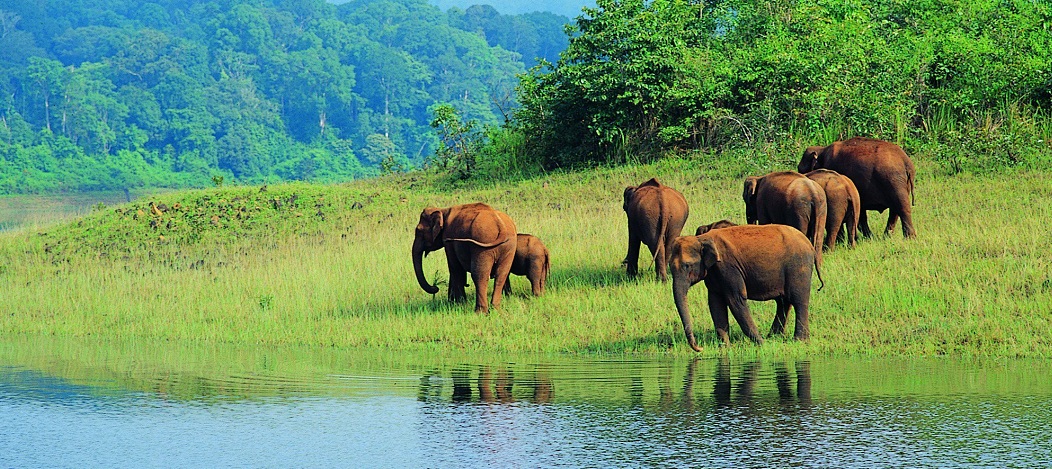Valmiki Tiger Reserve: A Fauna and Flora Chronicle

Nestled in the enchanting landscapes of Bihar, India, lies the Valmiki Tiger Reserve, a haven for nature enthusiasts and wildlife lovers alike. Spread across lush forests and meandering rivers, this reserve boasts a diverse range of flora and fauna, making it a captivating destination for ecotourism and conservation efforts. Let's delve into the intricate tapestry of life that thrives within this sanctuary.
Flora: The Valmiki Tiger Reserve is adorned with a rich array of flora, ranging from dense Sal forests to sprawling grasslands. The dominant vegetation comprises Sal (Shorea robusta), Asan (Terminalia tomentosa), and Harra (Terminalia chebula) trees, which provide essential habitats for numerous species of wildlife. These forests are not only visually stunning but also play a crucial role in maintaining ecological balance and preserving biodiversity.
Among the lesser-known flora species are the Dhak (Butea monosperma) trees, whose fiery orange blossoms add a vibrant hue to the landscape during the flowering season. The Dhak holds cultural significance in the region and is often used in traditional ceremonies and festivals.
The reserve is also home to a variety of medicinal plants, such as Aloe vera, Neem (Azadirachta indica), and Arjuna (Terminalia arjuna), which have been utilized by local communities for centuries for their healing properties. Efforts are underway to conserve and sustainably harvest these plants to support both traditional medicine practices and modern healthcare needs.
Fauna: Valmiki Tiger Reserve is renowned for its impressive wildlife population, including several endangered and threatened species. At the apex of the food chain roams the majestic Bengal tiger (Panthera tigris tigris), the symbol of strength and conservation efforts in the region. The reserve provides a vital habitat for these elusive predators, offering ample prey species such as deer, wild boar, and antelope.
The diverse range of mammalian fauna includes the Indian elephant (Elephas maximus indicus), Indian leopard (Panthera pardus fusca), and sloth bear (Melursus ursinus), each playing a crucial role in the delicate ecosystem of the reserve. Visitors may also encounter smaller mammals like the Indian pangolin, jungle cat, and Indian civet, adding to the charm of wildlife sightings.
Birdwatchers will delight in the avian diversity of Valmiki Tiger Reserve, with over 250 species recorded within its boundaries. From the magnificent Indian peafowl to the graceful Sarus crane, the reserve offers a paradise for bird enthusiasts and researchers alike. Wetlands and water bodies within the reserve attract migratory birds during the winter months, further enriching the avifauna diversity.
Conservation Efforts: Despite its natural beauty and ecological significance, the Valmiki Tiger Reserve faces numerous challenges, including habitat fragmentation, poaching, and human-wildlife conflict. Conservation efforts led by government agencies, non-profit organizations, and local communities aim to address these threats and safeguard the biodiversity of the reserve.
Community-based initiatives focus on sustainable livelihoods and eco-tourism activities, empowering local residents to become stewards of their natural heritage. Anti-poaching patrols and wildlife monitoring programs help combat illegal activities, while habitat restoration projects aim to enhance the resilience of ecosystems within the reserve.
Through collaborative efforts and public awareness campaigns, the Valmiki Tiger Reserve stands as a beacon of hope for conservation in the region, inspiring future generations to cherish and protect our planet's precious biodiversity.
In conclusion,
The Valmiki Tiger Reserve is a treasure trove of biodiversity, teeming with life and natural wonders waiting to be explored. By embracing sustainable practices and fostering a deeper connection with nature, we can ensure the preservation of this ecological gem for generations to come.